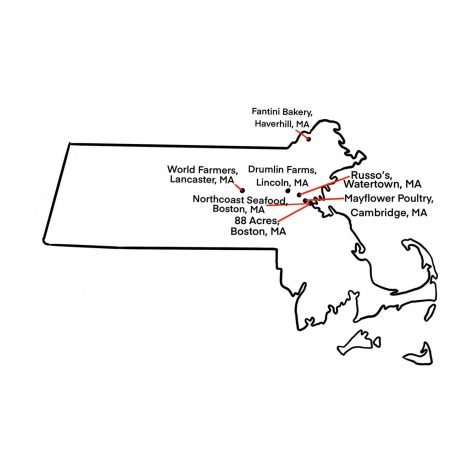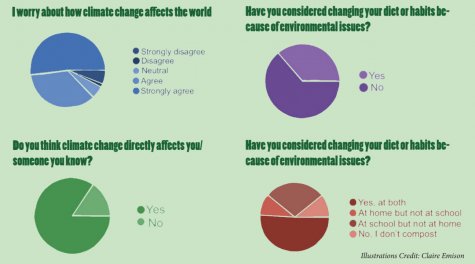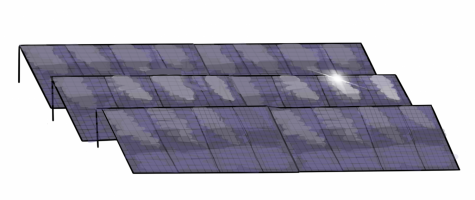Climate Change at CRLS
January 21, 2020
The following pieces are part of the Register Forum’s new series of guest-written contributions from different CRLS clubs. This centerspread was produced by the CRLS Environmental Action Club (EAC). Note: Isabelle Agee-Jacobson, editor-in-chief of the Register Forum, and Willa Frank, a managing editor, are co-presidents of EAC.
We are firm believers in the idea that everyone’s role in this ever-evolving movement against climate change is different. Each of us is part of a greater clockwork, and we each have a role to play to keep our clock ticking. We are not all activists by nature, but that’s okay. Right now, we need all hands on deck. Dedicating yourself to climate change is not about setting aside your dreams. It is about incorporating climate advocacy into the fabric of your life, day by day. To help you do that, we embarked on an investigative journey to find numbers that would illustrate the inner workings of our school’s climate impact. We are excited to present this data to you, in hopes that it allows you to incorporate environmental consciousness into your daily life at school and that it pushes CRLS as a whole to become even more sustainable.
Where CRLS’s Food Comes From
Ever thought about where the spinach in the media cafe or the chicken in the main cafe comes from? We embarked on a food sourcing project to determine where much of CRLS’s food—often hailed as being healthy and locally-grown—comes from.

Survey Results
We conducted a survey of 100 CRLS students to better understand the dominant body of thought amongst CRLS students in regards to the climate crisis. We collected the following data by randomly surveying CMs.

The Composting Process
According to the City, Cambridge sends all of its compost, sewage waste, and disposal waste (slurry) to the Charlestown Centralized Organic Recycling (CORe) facility located under the Tobin bridge. There, bacteria breaks down the food into methane and solids. More than 90% of the waste is used to make clean energy, and the remaining solids are made into nutrient-rich fertilizer.
CRLS’s Energy Use
In 2017, CRLS achieved a score of 94 out of 100 from ENERGY STAR’s Portfolio Manager tool, outperforming 94% of schools nationwide. Little known to many CRLS students, the school has solar panels atop the Arts Building which generate nearly 39,000 kilowatt hours of power each year. This is an encouraging step in the right direction towards the city’s Net Zero Action Plan, which they began working towards in 2013.

In the Future
While we think this is data is important for the CRLS community to understand, we feel that it is only a step towards understanding CRLS’s greater role in the climate crisis. We hope to see more reporting of this kind of data in the coming years. In particular, we feel it is important that we examine the composition of our waste as a whole. By the conclusion of this project, we are left wondering how all these numbers fit together. We are still curious about the success of composting—what percent of the material in the compost is actually compostable (how many erroneous plastic forks are ending up in there)? It appears that the administration is doing what it can, but how can we, as students, better utilize the waste systems in place? To answer these questions, we need greater transparency and better, more consistent data from our school. We need to continue to understand how the CRLS community views climate change and the ways they will be affected by the crisis so that ultimately, we can better involve the student body in our collective efforts to limit CRLS’s impact, on both a collective and individual level.
This piece also appears in our December 2019 print edition.









